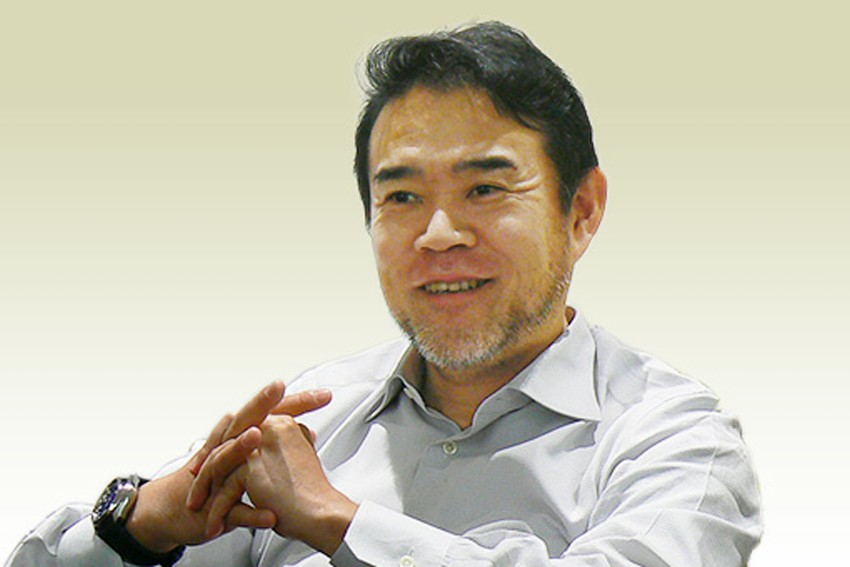

In this interview for the Worldfolio, Tatsuo Nakanishi, President of Nakanishi Metal Works, discusses the unique edge of Japanese manufacturers and his company’s contribution to the transformation of the automotive industry.

What are the competitive advantages of the “Made by Japan”?
First and foremost, we hold the position that ‘monozukuri’ itself finds its essence in ‘sakezukuri,’ or the making of Japanese alcohol.
To clarify, we’ll be using the sake brewing process as an example. The foundation of sake that makes it outstanding compared to other alcoholic beverages is the time necessary for fermenting. Consider how wine needs at least 10 to 15 years to achieve a perfect balance, taste and aroma mixture. In comparison, sake can be made and enjoyed fresh out of the brewing, and there is no time lag between its preparation and its readiness for consumption. So what comprises the ingredients for sake? It’s simple: good water and rice act as a base, as rice malts complete the final step of producing delicious sake.
Now let’s translate this simple concept and apply it to Japan’s traditional automobile manufacturing industry. For a vehicle to be assembled, over 30,000 parts are required to attain a perfect balance. If just one factor malfunctions, if just one small device is imperfect or incomplete, automakers will have to recall the entire product immediately. It’s imperative that the final stage of production is carefully executed to avoid such recall. For that reason, Japanese manufacturers have become experts at pursuing Total Quality Control. In comparison to other forms of quality checks, we do not just look at the end product, but rather at the entire assembly process. Even the smallest of issues gets reported, analyzed and treated in detail.
The adjustments and the construction expertise required to produce each individual piece among the 30,000 parts originate from the same principle behind the production of sake. While the process for sake is much simpler than putting a vehicle together, they are both created with the same goal: attaining the perfect balance.
We go beyond that as a result of our devotion to quality. The relatively higher cost of our manufacturing products and devices is balanced by our ability to deliver long-lasting, high quality, sustainable products. It’d be unreasonable to not put effort and funds into quality checks. We need them in order to uphold the high standards that Japanese companies are known and respected for.
Our successful expansion to foreign markets has been the result of our technological superiority and persistent development, but also of our strong partnerships. The level of service provided to ensure “Client Satisfaction” is undoubtedly one of the highest in the world. The majority of our domestic and global customers are repeated clients that continue to send us orders and are devoted to the future of our business. They fully trust the quality of our products and that is an important stepping stone in our overseas expansion.
The manufacturing world is currently going through deep changes with the emergence of new technologies such as factory automation and IoT. What has been the impact of these innovations on your company?
With the recent developments and introduction of IoT, robotics, and automation, we need a new labor force composed of younger personnel trained and equipped to manipulate and utilize these trends; not only in manufacturing, but also in the sales and advertising departments. The company is working toward integrating these changes in technology, notably will be more engaged in Industry4.0. Furthermore, we pay particular attention to related startups and we hope to conclude technological-based partnerships with them. It will bring us a decent benefit. Mastering and implementing these disruptive trends is the key to remaining competitive.
For instance, with IoT being incorporated, our craftspeople have extensive knowledge and skills that are not easily translated to newly trained workers. Our remedy for this will be to digitize the collected knowledge into a database by using IoT. After treating it, the gathered information can be displayed to our younger workers to raise their expertise level. This technology will allow us to transmit, from generation to generation, the historical expertise we have acquired.
In the current machine processing segment, five-axis machining will become a major development. It is the result of a series of improvement in the machining process. As it is more complicated to operate, the conventionally-needed craftsperson skills will be time-consuming and acquisition of the specific knowledge is welcomed instead. Logically, next generation human resources will be required to handle the machine’s difficult operating system. To facilitate our operating skills, our plan is to convert that information into a readily accessible digital format.
One of the sectors going through the most change is the automotive industry. We’ve seen the introduction of self-driving cars and of a great push for E/V or hybrid vehicles. This gives light to more kinds of parts, i.e. lighter parts and greener parts. What has been the impact of this on your company?
A third of the cars sold in Japan are hybrids or E/Vs. In comparison to the aforementioned 30,000 parts to a single engine, the new hybrid and E/Vs are only composed of less than half of the components. Furthermore, the activate process is much more intricate. We must adapt to these evolving demands and trends from our customers. For lightweight solutions, the frame and engine will need to be made from new materials like CFRP (carbon fiber reinforced plastic), aluminum, and even composite material. Our new R&D team is supposed to tackle these issues and create products tailored to the needs of the market. Since our establishment, we have been working hard for our basic mission of “Client Satisfaction First” and “Learn from the Past and Discover the New.” We hope to contribute to people’s enjoyment, to the creation of a more prosperous life and to development of a sustainable society.
0 COMMENTS